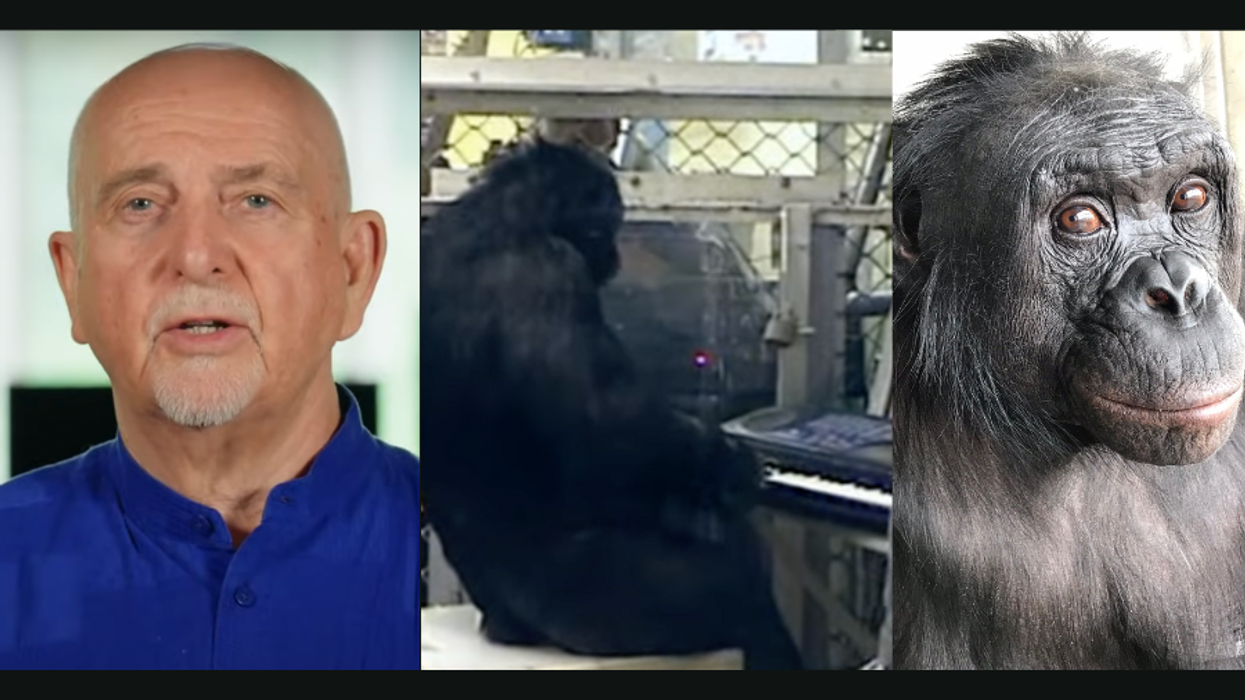Head outside or simply gaze out a window. Now, look up. What do you see?
A giant high-five, perchance?
Maybe a UFO zipping away?
A mouse in a hurry? Or is it a yawning tiger?
Cloud watching, and the almost inevitable sport of cloud interpretation, is typically viewed as the preoccupation of children, and maybe of adults too dreamy to care much about humdrum everyday life. Enthusiasm for crisp, blue, cloudless skies—that’s typical, and understandable. A sunny sky connotes an easy commute, pleasant weather, plentiful Vitamin D. But a love of clouds?
“I remember when I was four or five,” says Gavin Pretor-Pinney, the U.K.-based founder of the Cloud Appreciation Society, “being driven to school and seeing a cloud through the window of my mother’s car, with the sunlight bursting out from behind it and just being attracted to it, and wondering what it was made of, and why it was up there, and what it would be like to sit on it.” He says that most adults stop asking those fanciful questions, but for Pretor-Pinney, the cloud-loving phase stuck.
This was why, 10 years ago when a friend asked him to speak at a literary festival, he cheekily named his talk “The Inaugural Lecture of the Cloud Appreciation Society.” There was at the time no such society, but it was an intriguing name—and he did find clouds a beautiful part of nature.
“It seemed a shame to me that here in the U.K. at least, people seem to complain about [clouds] a lot. They think of them as nothing more than so many inches of rain or hail, and they think of them as nothing more than just the things that get in the way of the sun.”
After the talk introducing the notion of a Cloud Appreciation Society, people wanted to join and the society formed in earnest. They adopted a manifesto that includes a pledge to “fight ‘blue-sky thinking’ wherever we find it,” adding, “Life would be dull if we had to look up at cloudless monotony day after day.”
In the time since, Pretor-Pinney has written four books about clouds. Membership grew and in 2005, the society launched its website. Now members span 94 countries, and the oldest member is 96. Some members are in the cloud business—scientists or airline pilots, who Pretor-Pinney notes have a “great view of clouds from their office window.” Others are landscape painters and illustrators, perfecting these hard-to-capture sky features that also add drama to a scene. Still others are cloud-spotting hobbyists, and many upload photos to the Cloud Appreciation Society’s gallery.
This is how Pretor-Pinney noticed what came to be known as undulatus asperatus. The first image of this cloud—one roiling like a rough sea observed from underwater—came from a member in Iowa. Every year, as Pretor-Pinney categorized clouds on the site, one or two of these misfits stuck out, like wavy undulatus clouds, but he says “turned up to 11.” These clouds needed a name.
In 1802, amateur meteorologist Luke Howard developed the Latin nomenclature for clouds that most of us learned in grade school—cumulus, stratus, cirrus and the in-betweeners like cirrostratus. Today, the U.N.’s World Meteorological Association must accept the undulatus asperatus before it becomes an official cloud classification. The last new cloud type to be accepted was the cirrus intortus in 1951. Undulatus asperatus has been recommended for acceptance into the International Cloud Atlas by a preliminary task force, but decision and publication of the next atlas isn’t likely until the end of next year, or perhaps into 2016.
“In a way, I find that an amusing contrast,” says Pretor-Pinney, “the fact that these ephemeral, fleeting, passing formations that flow over us like emotions ... have to move through this long, rigorous, bureaucratic process to be kind of accepted as official.”
Until then, the Cloud Appreciation Society continues doing its work of gazing skyward. It’s an effort aimed at discovery with a philosophy that moves beyond clouds and into the beauty of daily life.
“One can find beauty and one can find the exotic in the everyday stuff around you, if you just change the way you look at it,” Pretor-Pinney explains. “This society exists, in a sense, as a reminder for us to shift our attitude and our perspective on these very everyday, mundane, commonplace phenomena… and be open to the fact that the clouds are, in a way, the most dynamic and evocative of nature's displays.” It’s an egalitarian pursuit he adds, “because everyone has a great view of the sky.” We need only look up.













